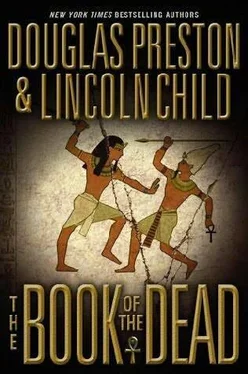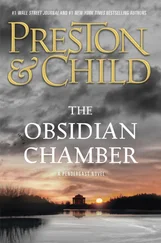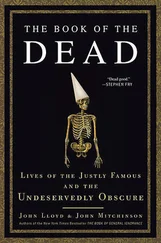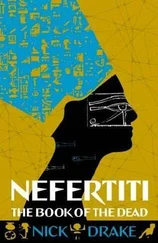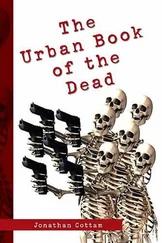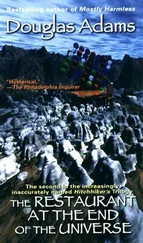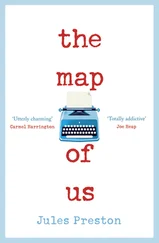There was a brief silence, broken only by the sound of labored breathing as Diogenes struggled to master himself, his opaque eye staring not quite at her, but not quite away from her, either.
He passed one hand across his brow. “I’ll be going now. But you’ll find I’ve left you with something. A gift of kinship, a recognition of the pain we share. I hope you’ll accept it in the spirit in which it is offered.”
“I want nothing from you,” Constance said, but the hatred and conviction in her voice had ebbed into confusion.
He held her gaze a moment longer. Then-slowly, very slowly-he turned and walked away, toward the library exit. “Good-bye, Constance,” he said quietly over his shoulder. “Take care. I’ll see myself out.”
Constance sat rooted in place as she listened to his departing footsteps. Only when silence had returned did she rise from her chair.
As she did so, something moved in the handkerchief pocket of her crinoline.
She started. The movement came again. And then a tiny pink nose appeared, bewhiskered and twitching, followed by two beady black eyes and two soft little ears. In wonder, she put her hand in her pocket and cupped it. The little creature climbed up on it and sat upright, his little paws curled as if begging, whiskers trembling, his bright eyes looking pleadingly up into her own. It was a white mouse: sleek, tiny, and perfectly tame-and Constance’s heart melted with a suddenness so unexpected that the breath fled from her and tears sprang into her eyes.
Dust motes drifted in the still air of the Central Archives reading room, and it smelled not unpleasantly of old cardboard, dust, buckram, and leather. Polished oak paneling rose to an elaborately carved and gilded rococo ceiling, dominated by a pair of heavy chandeliers of gilt copper and crystal. Against the far wall stood a bricked-up fireplace of pink marble at least eight feet high and as many wide, and the center of the room was dominated by three massive oaken tables with claw feet, tops laid over with a heavy covering of baize. It was one of the most impressive rooms in the museum-and one of the least known.
It had been over a year since Nora was last in this room, and despite its grandeur, the memories it evoked were not good. Unfortunately, it was the only place where she could peruse the museum’s most important historic files.
A faint tap came at the door and the stocky form of Oscar Gibbs entered, his muscular arms piled with ancient documents tied up with twine.
“There’s quite a lot on this Tomb of Senef,” he said, staggering a little as he laid out the documents on the baize table. “Funny that I never heard of it until yesterday.”
“Very few have.”
“It’s become the talk of the museum overnight.” He shook his head, which was shaved as bald as a billiard ball. “Only in a joint like this could you hide an Egyptian tomb.”
He paused, catching his breath. “You remember the drill, right, Dr. Kelly? I have to lock you in. Just call extension 4240 when you’re done. No pencils or paper; you have to use the ones in those leather boxes.” He glanced at her laptop. “And wear linen gloves at all times.”
“Got it, Oscar.”
“I’ll be in the archives if you need me. Remember, extension 4240.”
The huge bronze door closed and Nora heard the well-oiled click of the lock. She turned to the table. The neat bundles of documents emanated a heavy odor of decay. She looked them over one by one, getting a general sense of what there was and how much of it she actually needed to read. There was no way she could read them all: it would be a question of triage.
She had asked for accession files to the Tomb of Senef and all related documents in the archives, from its discovery in Thebes to its final 1935 closing as an exhibition. It looked like Oscar had done a thorough job. The oldest documents were in French and Arabic, but they switched to English as the tomb’s chain of ownership went from Napoleon’s army to the British. There were letters, diagrams of the tomb, drawings, shipping manifests, insurance papers, excerpts from journals, old photographs, and scientific monographs. Once the tomb arrived at the museum, the number of documents exploded. A series of fat folders contained construction diagrams, plats, blueprints, conservators’ reports, various pieces of correspondence, and innumerable invoices from the period of the tomb’s construction and opening; and beyond that, letters from visitors and scholars, internal museum reports, more conservators’ evaluations. The material ended with a flurry of documents relating to the new subway station and the museum’s request to the City of New York for a pedestrian tunnel connecting the 81st Street subway station with a new basement entrance to the museum. The final document was a terse report from a long-forgotten curator indicating that the bricking-up of the exhibition had been completed. It was dated January 14, 1935.
Nora sighed, looking at the spread of bundled documents. Menzies wanted a summary report of them by the following morning so they could begin planning the “script” for the exhibition, drawing up label text and introductory panels. She glanced at her watch: 1:00 P.M.
What had she gotten herself into?
She plugged in her laptop and booted it up. At the insistence of her husband, Bill, she had recently switched from a PC to a Mac, and now the boot-up process took a tenth the time-zero to sixty in 8.9 seconds instead of two and a half plodding minutes. It had been like trading up from a Ford Fiesta to a Mercedes SL. As she watched the Apple logo appear, she thought that at least one thing in her life was going right.
She slipped on a pair of crisp linen gloves and began untying the twine that held the first bundle of papers together, but before she could get the century-old knot undone, the twine parted with a puff of dust.
With infinite care, she opened the first folder and slipped out a yellowed document, written in a spidery French script, and began the laborious process of working her way through it, taking notes on the PowerBook. Despite her difficulties with the script and the French language, she found herself becoming absorbed in the story Menzies had briefly touched on in the tomb the day before.
During the Napoleonic Wars, Napoleon had conceived a quixotic plan to follow Alexander the Great’s route of conquest across the Middle East. In 1798, he mounted a huge invasion of Egypt, involving four hundred ships and 55,000 soldiers. In an idea radically modern for the time, Napoleon also brought with him more than 150 civilian scientists, scholars, and engineers, to make a complete scientific study of Egypt and its mysterious ruins. One of these scholars was an energetic young archaeologist named Bertrand Magny de Cahors.
Cahors was one of the first to examine the greatest Egyptological discovery of all time: the Rosetta stone, which Napoleon’s soldiers had unearthed while digging a fort along the shore. The stone inflamed him with the possibilities that lay ahead. He followed the Napoleonic army as it pushed southward up the Nile, where they came across the great temples of Luxor and, across the river, the ancient desert canyon that became the most famous graveyard in the world: the Valley of the Kings.
Most of the tombs in the Valley of the Kings were cut out of the living rock and could not be moved. But there were a few tombs of lesser pharaohs, regents, and viziers, built higher up in the valley out of blocks of cut limestone. And it was one of these-the Tomb of Senef, vizier and regent to Thutmosis IV-that Cahors decided to disassemble and take back to France. It was an audacious and even dangerous engineering feat, since the blocks weighed several tons each and had to be individually lowered down a two-hundred-foot cliff in order to be carted to the Nile and floated downstream.
Читать дальше
